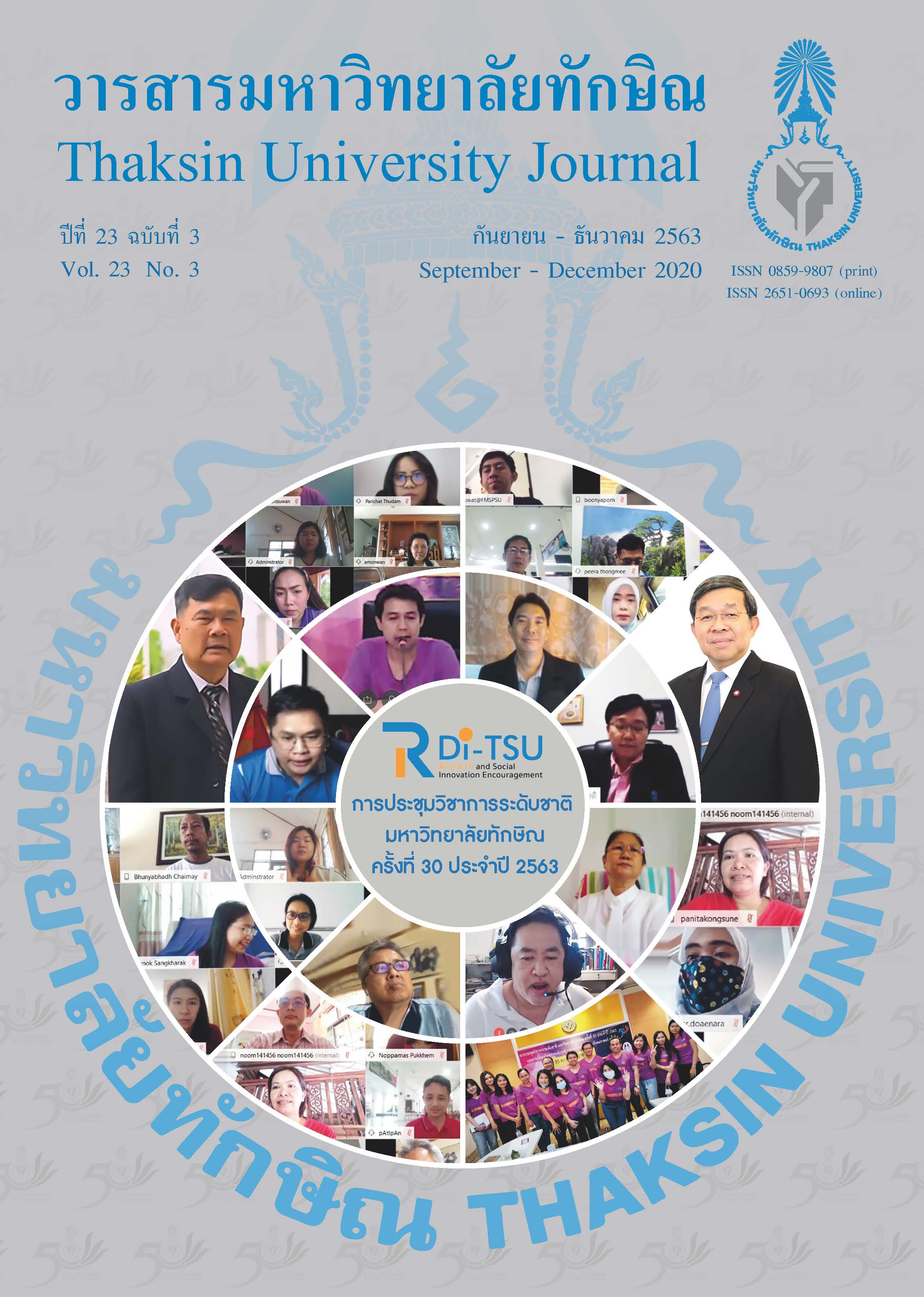Effects of Coating Plastic Thickness and Condition on Properties of Particleboard Using Tapioca Starch as Binder
Main Article Content
Abstract
This research aimed to analyze the effects of coating plastic thickness, pressing temperature and time on mechanical, and thermal properties of particleboard using tapioca starch as binder. The particleboard used in experiment for coating the plastic sheet was formed with a hot compression machine. According to the results, the particleboard coated with plastic sheet 0.4 mm gave higher modulus of rupture (MOR), modulus of elasticity (MOE), tensile strength (TS), tensile modulus (TM), hardness and thermal conductivity than coated with plastic 0.2 mm. Furthermore, when the particleboard was coated with pressing temperature 180 oC, an increment of pressing time in range of 5-10 min increased MOR, MOE, TS, TM, and hardness of the particleboard. Likewise, the particleboard showed an increase of MOR, MOE, TS, TM, hardness and thermal conductivity when increasing the pressing temperature from 180 to 200 oC and using the pressing time for 5 min. This is because the plastic sheet is more molten causing more penetration into the particleboard surface.
Article Details

This work is licensed under a Creative Commons Attribution-NonCommercial-NoDerivatives 4.0 International License.
References
Buachongkon, P., & Laemsak, N. (2007). Properties of medium gensity hiberboard made from Dendrocalamus Hamiltonii and Dendrocalamus Latiflorus with various age classes. Thai Journal of Forestry, 26(Suppl.), 83–92. (In Thai).
Homkhiew, C., Boonchouytan, W., & Cheewawuttipong, W. (2016). Effect of palmyra fruit fiber and tapioca starch contents on properties of non-toxic fiberboard. Ladkrabang Engineering Journal, 33(3), 39–46. (In Thai).
Hashim, R., Said, N., Lamaming, J., Baskaran, M., Sulaiman, O., Sato, M., …Sugimoto, T. (2011). Influence of press temperature on the properties of binderless particle board made from oil palm trunk. Materials and Design, 32, 2520–2525.
Homkhiew, C., Boonchouytan, W., Cheewawuttipong, W., Hoysakul, N., Kaewkong, W., & Ratanawilai, T. (2020). Measurement in some properties of non-toxic particleboard to optimize the formulation for food containers. Measurement, 156, 107617.
Chatthong, J., Homkhiew, C., & Rawangwong, S. (2017). Development of non-toxic fiberboard from rubberwood sawdust and cassava starch as food containers. Research report. Songkhla: Rajamangala University of Technology Srivijaya.
JIS–A 5905. (2003). Fibreboards (Online). Retrieved November 16, 2020, from https://archive.org/details/jis.a.5905.e.2003/page/n3/mode/2upJapanese.
ASTM International–ASTM D2240–15e1. (2015). Standard test method for rubber property-durometer hardness. West Conshohocken, Pennsylvania: U.S.A.
Homkhiew, C., Boonchouytan, W., Rawangwong, S., & Ratanawilai, T. (2017). Optimal manufacturing parameters of rubberwood flour/high density polyethylene composites using box–behnken design. The Journal of KMUTNB, 27(2), 315–328. (In Thai).
van der Vegt, A. K. (2002). From polymers to plastics. Netherlands: Delft University Press.
Rahman, M. R., Huque, M. M., Islam, M. N., & Hasan, M. (2009). Mechanical properties of polypropylene composites reinforced with chemically treated abaca. Composites Part A: Applied Science and Manufacturing, 40(4), 511–517.
Janbuala, S., & Wasanapiarnpong, T. (2017). The development of lightweight clay brick with added bagasse ash. SDU Research Journal Sciences and Technology, 10(1), 13–30. (In Thai).
Homkhiew, C., Rawangwong, S., Boonchouytan, W., Kaewpom, P., & Thongkaowphueak T. (2017). Mechanical, physical and thermal properties of binderless fiberboard from rice husk flour and rice straw flour. The Journal of Industrial Technology, 13(3), 85–100. (In Thai).


